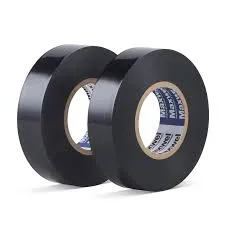Fire Insulation Tape The Unsung Hero of Safety and Efficiency
In an age where safety and efficiency are paramount, fire insulation tape emerges as an indispensable tool in various sectors, particularly in construction and manufacturing. This specialized tape not only serves the purpose of insulation but also plays a crucial role in enhancing fire safety standards. Understanding its composition, benefits, and applications can pave the way for better usage in various industries.
Composition and Properties
Fire insulation tape is primarily made from materials that are resistant to high temperatures and flames. Typically, the tape is constructed from fiberglass or a similar fire-resistant fabric, coated with an adhesive that maintains its integrity even under extreme conditions. The thickness and density of the tape can vary, allowing it to be tailored to specific applications. Most fire insulation tapes have excellent adhesive properties, enabling them to bond securely to a variety of surfaces including metal, wood, and plastics.
Another significant property of fire insulation tape is its ability to resist smoke and harmful gases, which is essential in containing fires and preventing further damage. The tape often complies with various safety standards and regulations, making it a reliable choice for construction projects that require stringent fire safety protocols.
Applications
Fire insulation tape is widely used across various industries, each employing it for distinct yet crucial functions.
1. Construction Industry In the construction sector, fire insulation tape is essential for insulating pipes, ducts, and other critical infrastructure that must withstand high temperatures. The tape is often used in the encasement of electrical wiring and as a sealant for gaps in fire-rated walls, ensuring that they remain effective barriers against fire and smoke spread.
fire insulation tape

2. Manufacturing In manufacturing plants, particularly those involving heat processes, such as metalworking or glass production, fire insulation tape is used to wrap around equipment to protect workers and materials from heat damage. Additionally, it can be utilized in conveyor systems to enhance their fire resistance.
3. Automotive Industry The automotive sector leverages fire insulation tape in various applications, including wrapping components that generate heat such as exhaust systems and engines. This tape helps minimize fire risks while boosting the overall efficiency of vehicle operation.
4. Aerospace In the aerospace sector, where safety is of utmost importance, fire insulation tape is used extensively in the wiring and insulation of aircraft. Its high-temperature resistance and lightweight properties make it an ideal choice for ensuring that aircraft systems can withstand the rigors of flight without compromising safety.
Benefits
The benefits of fire insulation tape go beyond mere fire prevention. By effectively insulating surfaces, it contributes to energy efficiency, reducing the need for excessive heating or cooling in buildings and facilities. This, in turn, contributes to lower energy costs, which can be a significant advantage in both commercial and residential spaces.
Moreover, the use of fire insulation tape can have a substantial impact on insurance premiums. Properties and facilities that adhere to safety standards and utilize fire-resistant materials often qualify for lower insurance rates, as they pose a reduced risk for insurers.
Conclusion
In conclusion, fire insulation tape may not be the most glamorous topic, but its significance cannot be understated. This simple yet effective tool is vital in protecting property and lives across various industries. As regulations continue to evolve, and as the need for enhanced safety measures grows, fire insulation tape will remain at the forefront of fire prevention strategies. Investing in quality fire insulation tape today means not only complying with legal requirements but also ensuring a safer and more efficient tomorrow. Whether in construction, manufacturing, automotive, or aerospace, acknowledging and harnessing the capabilities of fire insulation tape can lead to improvements in safety protocols and operational efficiency, making it a worthy consideration for any safety-conscious professional.
-
XIANGFAN Rubber Tape-Ultimate Solutions for All Your Insulation NeedsNewsJun.24,2025
-
XIANGFAN Rubber Tape-Protection for Industrial and Residential ApplicationsNewsJun.24,2025
-
XIANGFAN Rubber Tape: Superior Safety and Sealing for Demanding EnvironmentsNewsJun.24,2025
-
XIANGFAN Rubber Tape: Reliable Solutions for Every Electrical ChallengeNewsJun.24,2025
-
XIANGFAN Electrical & Industrial Tape: Powering Reliability Across IndustriesNewsJun.24,2025
-
XIANGFAN Electrical & Industrial Tape: Excellence in Every ApplicationNewsJun.24,2025
